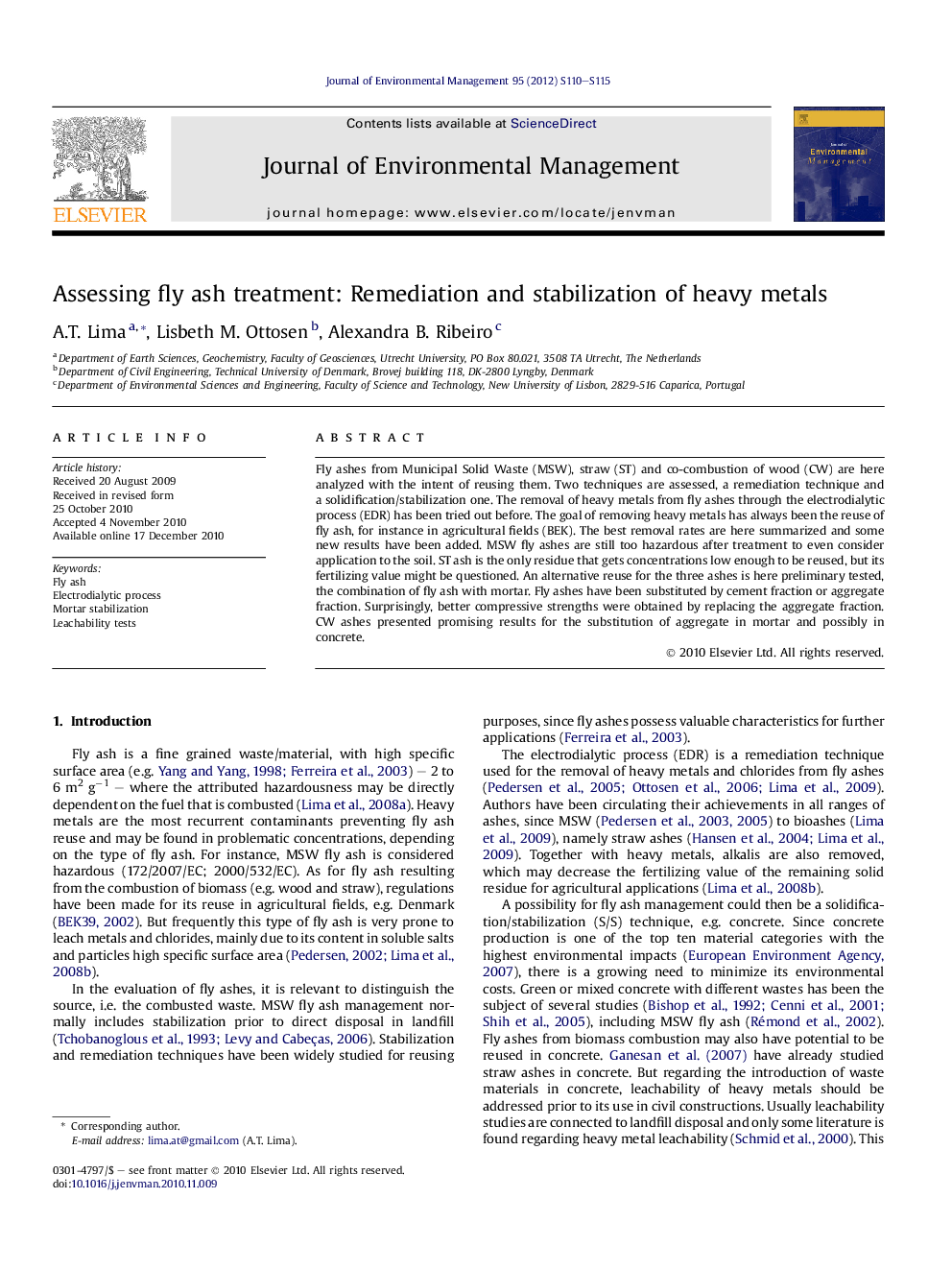| Article ID | Journal | Published Year | Pages | File Type |
|---|---|---|---|---|
| 1057037 | Journal of Environmental Management | 2012 | 6 Pages |
Fly ashes from Municipal Solid Waste (MSW), straw (ST) and co-combustion of wood (CW) are here analyzed with the intent of reusing them. Two techniques are assessed, a remediation technique and a solidification/stabilization one. The removal of heavy metals from fly ashes through the electrodialytic process (EDR) has been tried out before. The goal of removing heavy metals has always been the reuse of fly ash, for instance in agricultural fields (BEK). The best removal rates are here summarized and some new results have been added. MSW fly ashes are still too hazardous after treatment to even consider application to the soil. ST ash is the only residue that gets concentrations low enough to be reused, but its fertilizing value might be questioned. An alternative reuse for the three ashes is here preliminary tested, the combination of fly ash with mortar. Fly ashes have been substituted by cement fraction or aggregate fraction. Surprisingly, better compressive strengths were obtained by replacing the aggregate fraction. CW ashes presented promising results for the substitution of aggregate in mortar and possibly in concrete.
